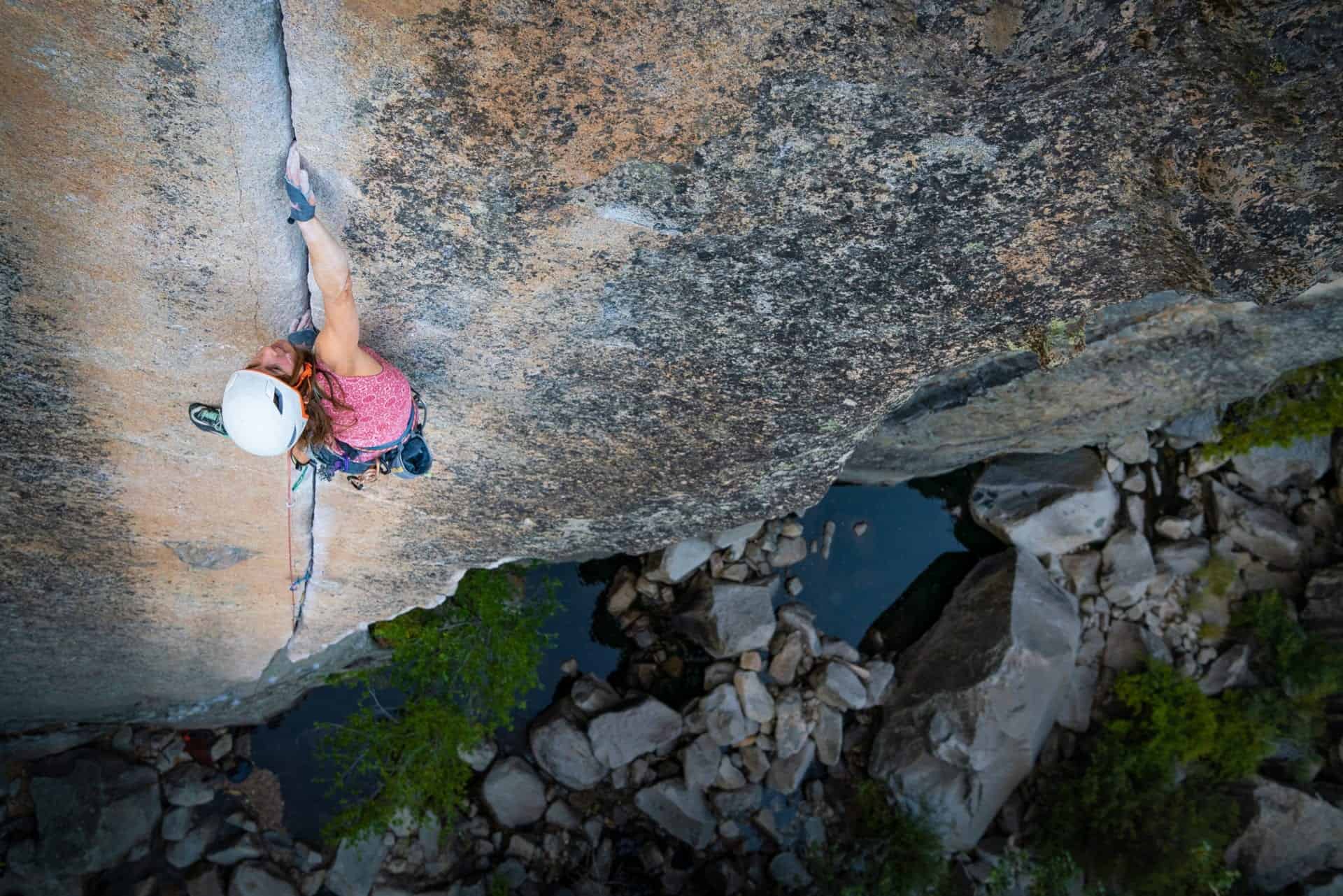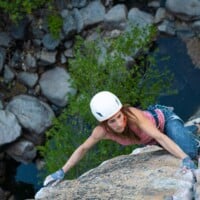Editors Note: At Gnarly we feel it is important to bring awareness to RED-S (formally referred to as the Female Athlete Triad) as it relates to the health and performance of athletes (including men). Readers must know we are not attempting to diagnose or treat any medical conditions in this article. It is a two-part series that explores a sensitive subject through the personal experience of the author. Please be advised there is mature content within.
“You need to gain fifteen pounds, ASAP.”
Startled, having just set foot in a doctor’s office for a check-up required by work, my mind went to humor.
“So, you mean like the weight of a house cat?,” I replied.
“Gain some fat, get a cat” became an inside joke between my coworkers and me, a rallying cry preceding many large dinners as we worked in California’s High Sierra.
That wasn’t the first time I heard such advice. In 2016, I was becoming interested in climbing performance and body composition and got a DXA (dual x-ray absorption) scan, a test that measures amounts of fat, muscle tissue, and bone density. For female athletes, body fat between 14-22% is considered healthy. Bone density is measured in “T-scores”, standard deviations from normal bone density, which is represented as 0. A score between +1 and -1 is considered healthy.
At 5’4’’ and 110 lbs, I clocked in at 15% body fat with a bone density score of -1.1, meaning I had low levels of both. The technician asked if I was having regular periods, an indicator of healthy levels of hormones like estrogen that influence bone density.

Jasna on Jagged Peaks (13a), Equinox, WA
Photo: M. Humphrey @noskinleft
When I first noticed the disappearance of my period in 2012, I was under tremendous stress due to a debilitating and complex injury. When I regained my health and my periods were still only infrequent, I transferred the excuse from “stress” to “birth control,” as missing periods are a side effect of the pill.
My dismissal of adverse health indicators and my ability to write off the experience as a joke reveals my attitude toward the issue – I didn’t see it as a problem. I’ve always been naturally thin, a voracious eater and often buzzed with an energy that bordered on hyperactive. I ran and eventually climbed to outlet this energy. In college, I earned the endearing nickname “the vulture” because I would always pick off people’s unfinished plates.
In fact, gaining fat has always been difficult for me, with excess calories manifesting as muscle. The doctor’s declaration that I gain weight sounded like an echo of remarks I’d heard from family, boyfriends and friends. Sometimes it seemed well-intentioned, but it also felt patronizing, debasing and pointless – like they were telling me to just “grow taller.”

Jasna on Fish Crack (12b), Yosemite
Photo: Chris Weidner @christopherweidner
As I pursued climbing, I was told anything from “you look great and toned” to “be careful, you are starting to look too muscular for a woman,” as if the purpose of my body wasn’t to enable me to perform, but rather to look a certain way for others. Praised and criticized for my natural physiology, I felt pulled in opposing directions, the result being that I stood still where I was. I became hyper-aware of my appearance as mixed messages swirled like violent eddies in my mind. Perhaps my body, lean and potentially beneficial for climbing, and the stereotypical female body I was told was desirable and attractive, were mutually exclusive.
These competing thoughts were white noise against the background of my drive to climb well. Instead of considering the comments that grew from genuine concern, I developed a chip on my shoulder. I felt energetic, was eating well and was doing what made me happy – why would I change for anyone else?
—-
In 2017 I saw a gynecologist to discuss IUDs, a type of birth control. She took one glance at my medical history, four years of infrequent periods, and ordered another DXA to evaluate my bone density. Since the first scan, I had gained weight, so I assumed the problem was resolved. “This is great comparative data!” I thought. The results arrived quickly.
“Significant osteopenia is noted at the spine and hips; there is currently an increased risk of fracture “
In my spine, my bone density was 86% of normal, 87% in my hips and 83% in my neck. I had early-onset osteopenia, a reduction in bone mass preceding osteoporosis, a severe condition in which bones become brittle and fracture easily. I was 26.
A fear dropped in me swiftly and hard. A once distant threat, some imperceptible sensation I could barely recognize, suddenly brandished itself in irrefutable numbers, grasping me by the shoulders and screaming for attention. I felt cheated like my body was silently crumbling away and it didn’t even warn me – except that it had.
__
It seemed like an irrevocable and destructive force was moving through me. It was painful to even begin to consider the reality that it was I who let it in.
Jasna’s journey with Red – S (Female Athlete Triad) continues in part II, to be published in our next newsletter. Read more about her diet and training changes, bone density progress, and how she discovered a path towards better health while still progressing her climbing.
__
Jasna Hodžić is an avid rock-climber, runner and researcher. When she began to climb, she became fascinated by the processes that shaped the ecosystems around her. Following this muse, she began graduate school at the University of Washington to study plant ecology. Prior to this, she worked as an accomplished and award-winning photojournalist.
You can find more of her writing and photography at www.jasnahodzic.blog.
__
1 Jeukendrup, A. E., & Gleeson, M. (2004). Sports nutrition. Champaign, IL: Human Kinetics.
2 NIH Osteoporosis and Related Bone Diseases National Resource Center, National Institutes of Health. Bone mass measurement: what the numbers mean (2012). Bethesda, MD.



